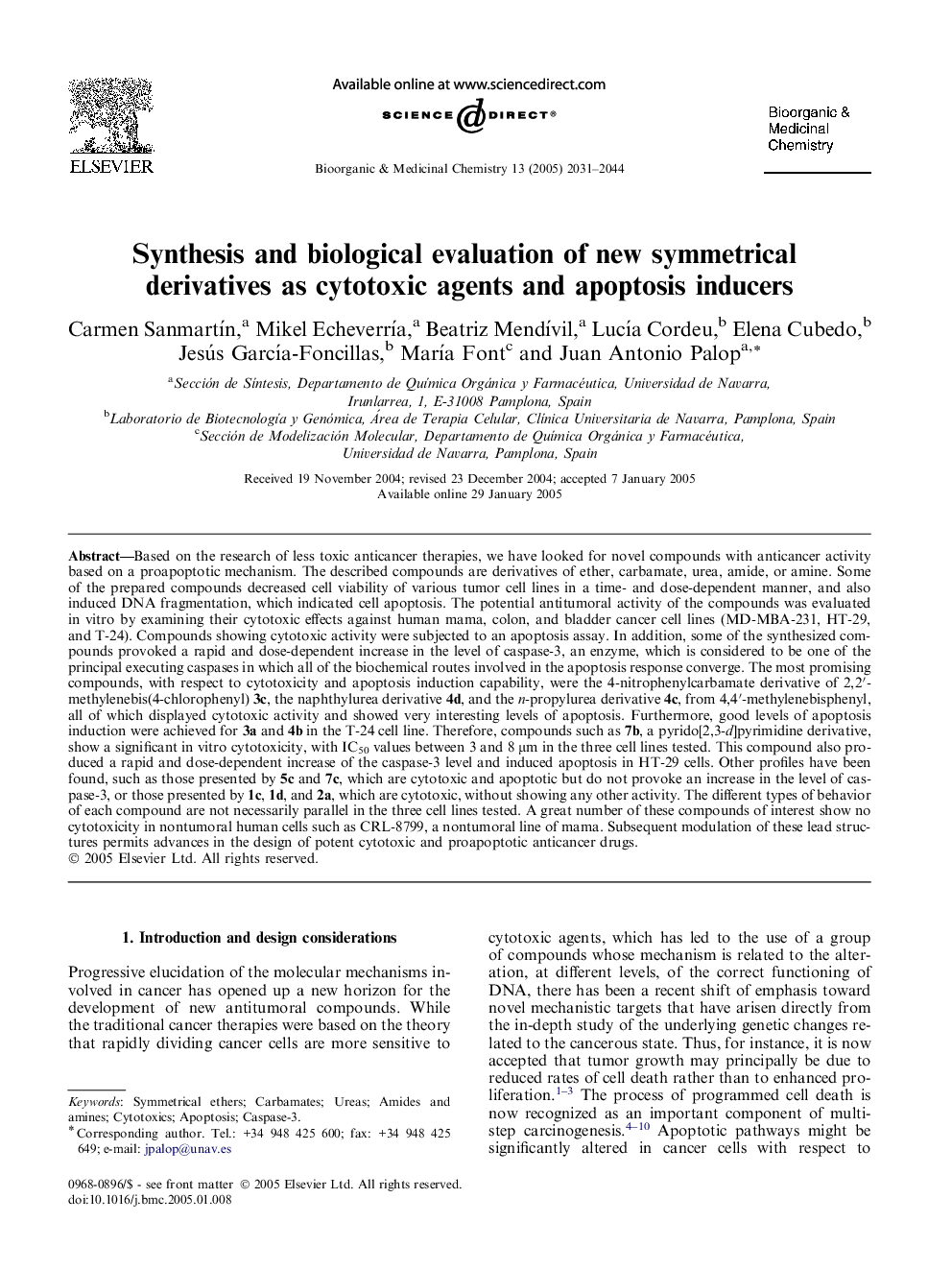| کد مقاله | کد نشریه | سال انتشار | مقاله انگلیسی | نسخه تمام متن |
|---|---|---|---|---|
| 1366604 | 981597 | 2005 | 14 صفحه PDF | دانلود رایگان |

Based on the research of less toxic anticancer therapies, we have looked for novel compounds with anticancer activity based on a proapoptotic mechanism. The described compounds are derivatives of ether, carbamate, urea, amide, or amine. Some of the prepared compounds decreased cell viability of various tumor cell lines in a time- and dose-dependent manner, and also induced DNA fragmentation, which indicated cell apoptosis. The potential antitumoral activity of the compounds was evaluated in vitro by examining their cytotoxic effects against human mama, colon, and bladder cancer cell lines (MD-MBA-231, HT-29, and T-24). Compounds showing cytotoxic activity were subjected to an apoptosis assay. In addition, some of the synthesized compounds provoked a rapid and dose-dependent increase in the level of caspase-3, an enzyme, which is considered to be one of the principal executing caspases in which all of the biochemical routes involved in the apoptosis response converge. The most promising compounds, with respect to cytotoxicity and apoptosis induction capability, were the 4-nitrophenylcarbamate derivative of 2,2′-methylenebis(4-chlorophenyl) 3c, the naphthylurea derivative 4d, and the n-propylurea derivative 4c, from 4,4′-methylenebisphenyl, all of which displayed cytotoxic activity and showed very interesting levels of apoptosis. Furthermore, good levels of apoptosis induction were achieved for 3a and 4b in the T-24 cell line. Therefore, compounds such as 7b, a pyrido[2,3-d]pyrimidine derivative, show a significant in vitro cytotoxicity, with IC50 values between 3 and 8 μm in the three cell lines tested. This compound also produced a rapid and dose-dependent increase of the caspase-3 level and induced apoptosis in HT-29 cells. Other profiles have been found, such as those presented by 5c and 7c, which are cytotoxic and apoptotic but do not provoke an increase in the level of caspase-3, or those presented by 1c, 1d, and 2a, which are cytotoxic, without showing any other activity. The different types of behavior of each compound are not necessarily parallel in the three cell lines tested. A great number of these compounds of interest show no cytotoxicity in nontumoral human cells such as CRL-8799, a nontumoral line of mama. Subsequent modulation of these lead structures permits advances in the design of potent cytotoxic and proapoptotic anticancer drugs.
The synthesis and pharmacology of new symmetrical derivatives (W = (CH2)n; cyclohexane; piperazine; pyridopyrimidine; diphenylmethane. Y = ether; amine; amide; carbamate; urea. R = alkyl; aryl; heteroaryl; alkylaryl) is described. Compounds showing cytotoxic activity were subjeted to an apoptosis assay. Some of the synthesized compounds provoked a increase in the level of caspase-3.Figure optionsDownload as PowerPoint slide
Journal: Bioorganic & Medicinal Chemistry - Volume 13, Issue 6, 15 March 2005, Pages 2031–2044